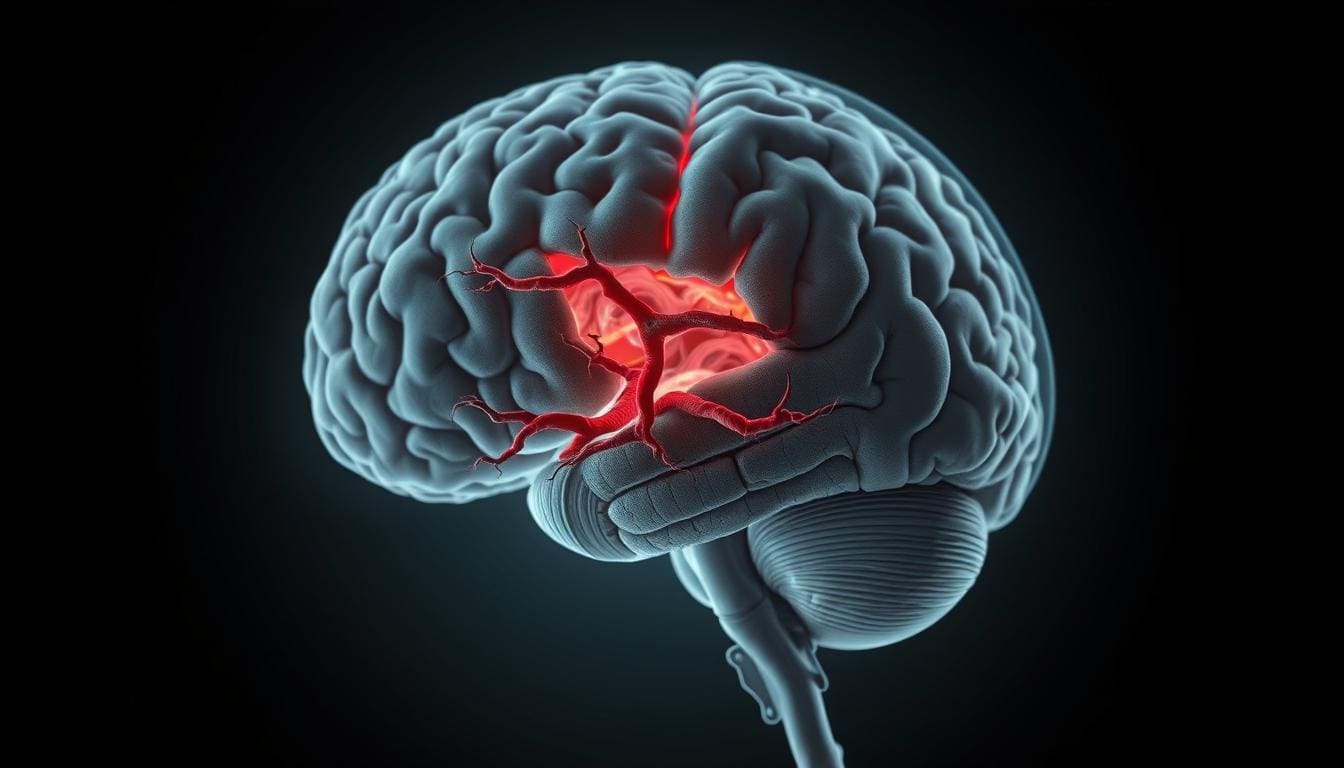Last Updated on November 27, 2025 by Bilal Hasdemir

At Liv Hospital, we aim to give top-notch healthcare to international patients. Alkylating chemotherapy agents are key in fighting different cancers. They stop cancer cells from growing by messing with their DNA.
We focus on effective and targeted cancer treatments. Alkylating agents are essential in cancer care, with many uses. Our oncology team works hard to tailor treatments for each patient, using these agents to help them get better.
Key Takeaways
- Alkylating chemotherapy agents are vital in cancer treatment.
- These agents disrupt DNA synthesis in tumor cells.
- Liv Hospital offers complete cancer care with the latest therapies.
- Our oncology team gives personalized treatment plans.
- Alkylating agents have many uses in medicine.
The Science Behind Alkylating Chemotherapy
Exploring alkylating chemotherapy reveals a mix of history and current use. These drugs have been treating cancer for decades. They work by adding an alkyl group to cancer cells’ DNA, stopping them from copying and killing them.
Definition and Historical Development
Alkylating agents are drugs that add alkyl groups to cancer cells’ DNA. This damages the DNA and kills the cells. The first used were nitrogen mustards, marking a big step in fighting cancer.
| Agent | Primary Use | Mechanism |
|---|---|---|
| Nitrogen Mustards | Lymphomas, Leukemias | DNA Alkylation |
| Nitrosoureas | Brain Tumors, Lymphomas | DNA Cross-linking |
Role in Modern Cancer Treatment Protocols
Today, alkylating agents are key in many cancer treatments. They help fight various cancers, including blood cancers and solid tumors. They’re good at damaging DNA, which stops cancer cells from growing fast. These drugs are often mixed with others to work better.
Understanding alkylating chemotherapy helps us see their importance in cancer care. It also shows the ongoing work to make them more effective and safer.
Mechanism of Action: How Alkylating Agents Disrupt DNA Synthesis
Alkylating agents are key in fighting cancer by messing with the DNA of cancer cells. They stop these cells from growing. These agents add an alkyl group to DNA, causing DNA strands to stick together.
This sticking prevents DNA from copying itself or making new proteins. This is how they stop cancer cells from growing.
The Process of DNA Alkylation
DNA alkylation is when alkylating agents attach an alkyl group to DNA. This happens mainly at the N7 position of guanine, creating DNA adducts. This damage kills cells, mainly fast-growing cancer cells.
The alkylation process is irreversible, making it an effective way to kill cancer cells.
The steps are:
- Alkylating agents are given and go into the blood.
- They reach cancer cells’ DNA and add an alkyl group.
- This alkylation causes DNA strands to stick together.
- This sticking stops DNA from copying itself or making proteins, leading to cell death.
Cell Cycle Non-Specific Activity and Implications
Unlike some other chemotherapy agents, alkylating agents work in all cell cycle phases. This makes them great for treating slow-growing tumors.
| Characteristics | Cell Cycle Specific Agents | Alkylating Agents |
|---|---|---|
| Cell Cycle Phase | Act on specific phases (e.g., S phase) | Active in all phases of the cell cycle |
| Effectiveness on Slow-Growing Tumors | Limited effectiveness | Effective due to non-specific activity |
A leading oncologist says, “Alkylating agents’ ability to work across different cell cycle phases makes them invaluable in treating various cancers.” Their ability to cause DNA damage highlights their role in chemotherapy.
Classification of Alkylating Agents in Oncology
Alkylating agents are divided into several key classes. Each class has its own use in treating cancer. We will look at nitrogen mustards, nitrosoureas, and alkyl sulfonates to see how they help fight cancer.
Nitrogen Mustards
Nitrogen mustards are among the first and most recognized types of alkylating agents. Cyclophosphamide and chlorambucil are examples used to treat cancers like lymphomas and leukemias. They work by attaching to DNA, stopping cancer cells from growing.
Nitrosoureas
Nitrosoureas, like carmustine and lomustine, are key for treating brain tumors. They can get past the blood-brain barrier, making them effective for brain cancers.
Alkyl Sulfonates and Other Categories
Alkyl sulfonates, like busulfan, are mainly used before stem cell transplants. Other types include triazenes and ethyleneimines.
“The diversity of alkylating agents allows for tailored treatment approaches in oncology,”
showing why it’s important to know about these different types.
By understanding these categories, we can improve how we treat cancer. This knowledge helps us tailor treatments better, leading to better outcomes.
Cyclophosphamide: The Most Widely Used Alkylating Agent
Cyclophosphamide is a key drug in cancer treatment. It is used in many cancer treatments. We will look at how it works and its role in fighting cancer.
Pharmacological Properties and Metabolism
Cyclophosphamide is a special compound that needs to be changed in the body to work. It is mainly made in the liver by enzymes. This change makes it active against cancer cells.
The drug’s half-life is 3-12 hours. It is mostly removed by the kidneys. A study on NCBI shows knowing how it works is key to its success.
Clinical Applications in Lymphoma, Leukemia, and Solid Tumors
Cyclophosphamide helps treat many cancers, like lymphoma and leukemia. It also works on some solid tumors, like breast and ovarian cancer. It’s often mixed with other drugs to make it stronger.
In lymphoma treatment, it’s a big part of the CHOP regimen. It also helps prepare for stem cell transplants by weakening the immune system.
We understand how important cyclophosphamide is in cancer treatment. But, we must also think about its side effects. It’s a powerful tool, but we need to consider each patient’s needs to avoid harm.
Chlorambucil and Melphalan: Key Agents in Hematological Malignancies
Chlorambucil and Melphalan are key drugs for treating blood cancers. They help manage Chronic Lymphocytic Leukemia (CLL) and Multiple Myeloma.
Chlorambucil: Mechanism and Use in Chronic Lymphocytic Leukemia
Chlorambucil stops cancer cells from copying themselves by damaging their DNA. It’s mainly used for CLL, a blood and bone marrow cancer.
Chlorambucil’s benefits include:
- It helps manage CLL symptoms well.
- It has fewer side effects than other chemotherapy drugs.
- It’s easy to take by mouth.
But, Chlorambucil has its downsides. Over time, cancer cells can become resistant to it. This means doctors might need to find other treatments.
Melphalan: Role in Multiple Myeloma and Stem Cell Transplantation
Melphalan is effective against Multiple Myeloma, a cancer of plasma cells in the bone marrow. It’s also used before stem cell transplants.
Melphalan’s benefits are:
- It has high success rates in treating Multiple Myeloma.
- It’s used in high-dose chemotherapy before stem cell transplants.
- It can be given in different ways, like by mouth or through a vein.
Melphalan is important in stem cell transplants. It helps clear out cancer cells in the bone marrow before the transplant.
Four Additional Essential Alkylating Chemotherapy Agents
We’re looking at four more important alkylating agents in the fight against cancer. These agents are key in certain treatments and have helped a lot in cancer care.
Busulfan: Applications in Conditioning Regimens
Busulfan is a key alkylating agent used before hematopoietic stem cell transplantation. It’s great for treating chronic myeloid leukemia. It helps get rid of cancer cells.
A study in the Journal of Clinical Oncology shows busulfan works well. It’s safe and effective for patients with myeloproliferative disorders.
“Busulfan-based conditioning regimens are effective and relatively safe for patients with myeloproliferative disorders undergoing hematopoietic stem cell transplantation.”
Carmustine: Treatment of Brain Tumors and Lymphomas
Carmustine, also known as BCNU, is a nitrosourea alkylating agent. It’s key in treating brain tumors like glioblastoma and some lymphomas. It can get into the brain, making it great for brain cancers.
| Condition | Treatment Protocol | Response Rate |
|---|---|---|
| Glioblastoma | Carmustine + Temozolomide | 60% |
| Lymphoma | Carmustine + Rituximab | 70% |
Temozolomide: First-line Therapy for Glioblastoma
Temozolomide is an oral alkylating agent. It’s a mainstay in glioblastoma treatment. It’s easy to take and has fewer side effects.
Key benefits of temozolomide include:
- Oral administration
- Ability to cross the blood-brain barrier
- Proven efficacy in glioblastoma treatment
Ifosfamide: Management of Pediatric and Adult Sarcomas
Ifosfamide is used in treating sarcomas in kids and adults. It’s often mixed with other drugs and mesna to reduce side effects.
Ifosfamide works well on soft tissue sarcomas and osteosarcomas. It helps in both local and spread-out diseases.
Clinical Applications of Alkylating Chemotherapy Across Cancer Types
Alkylating chemotherapy agents are key in fighting many cancers. They work well on both blood cancers and solid tumors. These agents target fast-growing cancer cells very effectively.
Treatment Protocols for Hematological Malignancies
Hematological malignancies, like leukemias, lymphomas, and multiple myeloma, often get treated with alkylating chemotherapy. These treatments are very helpful in managing these diseases.
Leukemias and Lymphomas
For leukemias and lymphomas, we use drugs like cyclophosphamide and chlorambucil. They help bring cancer into remission and are part of bigger treatment plans.
Multiple Myeloma
In treating multiple myeloma, melphalan is a mainstay. It’s used alone or with other treatments. Studies show it can increase survival chances.
Management Strategies for Solid Tumors
Solid tumors, like breast and ovarian cancers, and brain tumors, also get treated with alkylating chemotherapy. The right drug depends on the cancer type, its stage, and the patient’s health.
Breast and Ovarian Cancers
In breast and ovarian cancers, cyclophosphamide is often used. It’s usually given with other drugs. Its success in these areas is well-known.
Brain Tumors and Rare Malignancies
For brain tumors, like glioblastoma, temozolomide is a go-to treatment. It crosses the blood-brain barrier well, making it very effective for these tough cancers.
| Cancer Type | Common Alkylating Agents Used | Treatment Context |
|---|---|---|
| Leukemias | Cyclophosphamide, Chlorambucil | Induction of remission, combination chemotherapy |
| Lymphomas | Cyclophosphamide | Part of combination chemotherapy regimens |
| Multiple Myeloma | Melphalan | Single agent and combination therapy |
| Breast Cancer | Cyclophosphamide | Combination chemotherapy |
| Ovarian Cancer | Cyclophosphamide | Combination chemotherapy |
| Brain Tumors (Glioblastoma) | Temozolomide | Standard treatment, often with radiotherapy |
We keep using alkylating chemotherapy as a key part of cancer treatment. We adjust it to meet the changing needs of patients and the complexities of different cancers.
Challenges and Considerations in Alkylating Agent Therapy
Alkylating agents are key in fighting cancer, but they face big challenges. We must tackle these issues as we keep using them in treatments. It’s vital to overcome the obstacles in their use.
Resistance Mechanisms and Overcoming Strategies
One major problem is when tumors develop resistance. This can happen through several ways, like better DNA repair or changes in drug transport. To beat resistance, we can mix alkylating agents with other drugs and use agents that block DNA repair.
Managing Toxicity Profiles and Side Effects
Alkylating agents can be very toxic, causing issues like low blood counts, nausea, and even cancer later on. It’s key to manage these side effects well. This means adjusting doses, using supportive care, and watching for late effects. We need to find the right balance between their benefits and risks.
Special Populations: Pediatric, Geriatric, and Pregnancy Considerations
When treating with alkylating agents, we must think about different groups of patients. Kids might face long-term growth issues, while older adults need careful dosing due to kidney problems and other health issues. Pregnant women also face big risks, so we must counsel them carefully.
By grasping these challenges, we can better use alkylating agents in cancer treatment. This will help improve results for our patients.
Conclusion: The Evolving Landscape of Alkylating Agents in Cancer Care
Alkylating agents are key in fighting cancer. They have a long history in cancer treatment. Today, they are essential in many cancer types.
Research keeps improving how we use these agents. It helps tackle problems like resistance and side effects. At Liv Hospital, we use the latest in alkylating therapy to help our patients.
The future of cancer treatment looks bright with alkylating agents. They will keep being a big part of fighting cancer. This brings hope and better results for patients everywhere.
FAQ
What are alkylating chemotherapy agents?
Alkylating chemotherapy agents are drugs used to fight cancer. They attach an alkyl group to the DNA of cancer cells. This stops them from copying themselves.
How do alkylating agents work?
These agents work by adding an alkyl group to DNA. This causes cross-linking and stops cancer cells from copying. They can affect cancer cells at any stage of their life cycle.
What are the different categories of alkylating agents?
There are three main types: nitrogen mustards, nitrosoureas, and alkyl sulfonates. Examples include cyclophosphamide and chlorambucil.
What is cyclophosphamide used for?
Cyclophosphamide is a key alkylating agent. It treats lymphoma, leukemia, and solid tumors. It’s often used with other drugs.
What are the side effects of alkylating chemotherapy agents?
Side effects include myelosuppression, nausea, and vomiting. Long-term effects can be infertility and secondary cancers. Managing these is key for patient care.
Can alkylating agents be used in pediatric and geriatric patients?
Yes, but with caution. Age affects how the body handles drugs. Dose adjustments and careful monitoring are needed.
Are alkylating agents used in treating brain tumors?
Yes, drugs like temozolomide and carmustine are used for brain tumors. They can cross the blood-brain barrier, making them effective.
How do alkylating agents address resistance mechanisms?
Resistance can arise through DNA repair. To combat this, combination chemotherapy and new agents are used.
What is the role of alkylating agents in conditioning regimens for stem cell transplantation?
Agents like busulfan and melphalan are used to clear cancer cells before transplant. This is common in hematological malignancies.
Can alkylating chemotherapy agents be used during pregnancy?
Use during pregnancy is rare, due to risks to the fetus. But, in some cases, benefits may outweigh risks. A healthcare provider must carefully consider this.
References
- National Center for Biotechnology Information (NCBI) / Books: https://www.ncbi.nlm.nih.gov/books/NBK547849/
- Sketchy: https://www.sketchy.com/medical-lessons/alkylating-agents
- Osmosis: https://www.osmosis.org/learn/Alkylating_agents:_Nursing_Pharmacology
- Wikipedia: https://en.wikipedia.org/wiki/Alkylating_antineoplastic_agent
- Nursing Center: https://www.nursingcenter.com/ncblog/march-2023/alkylating-agents








